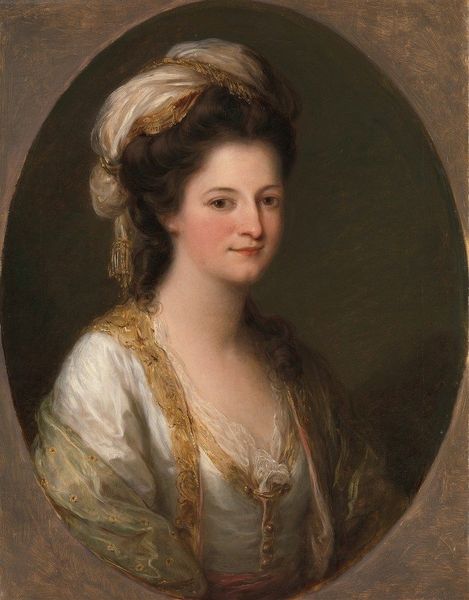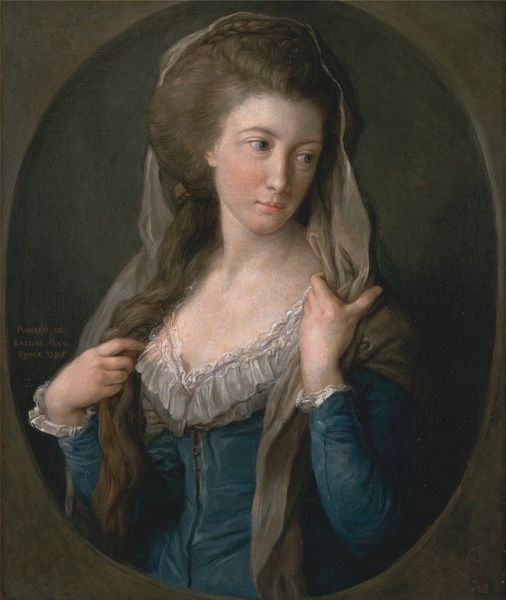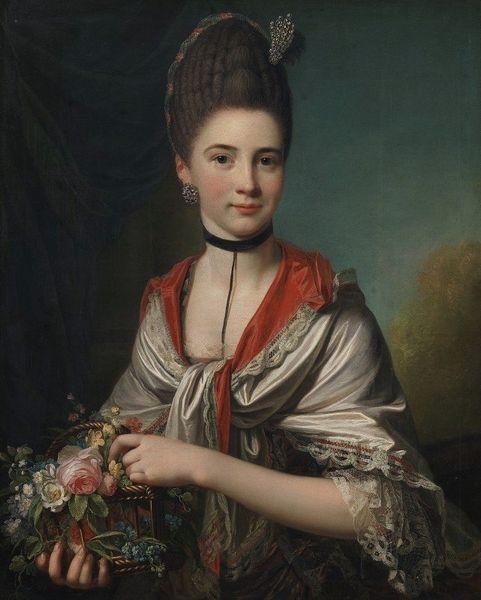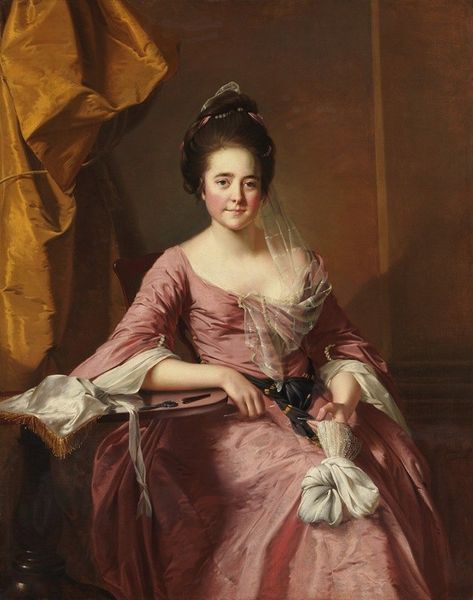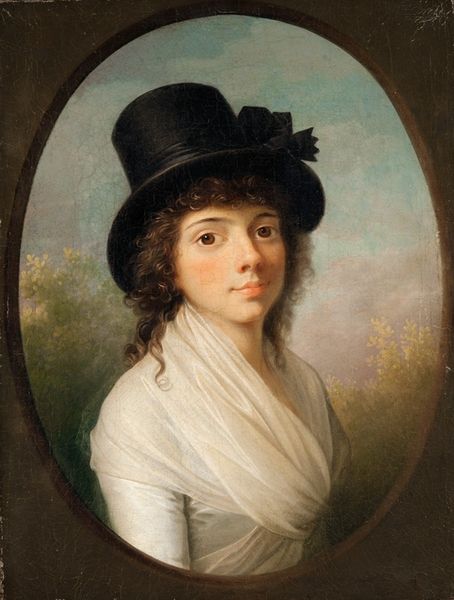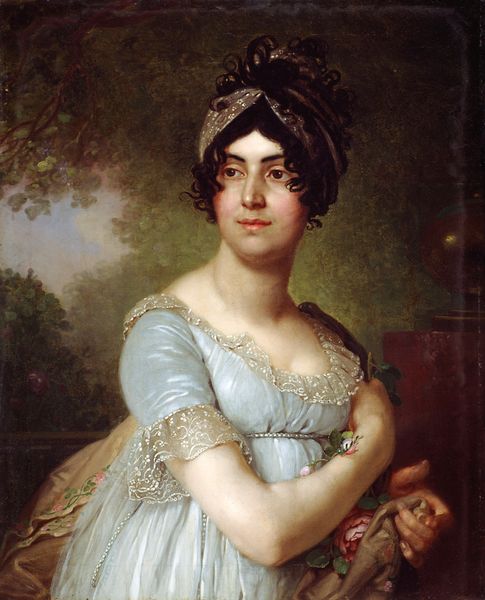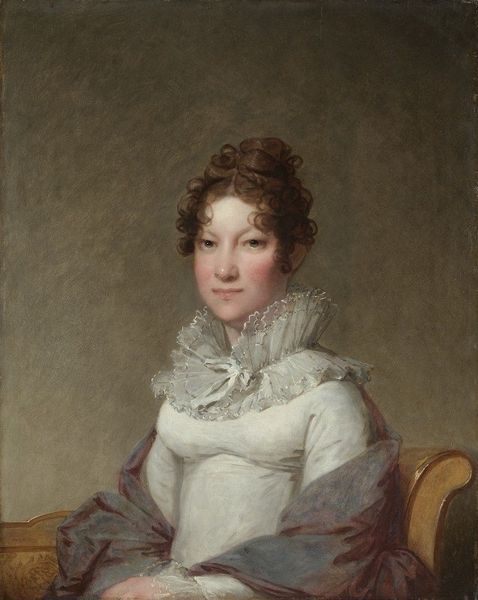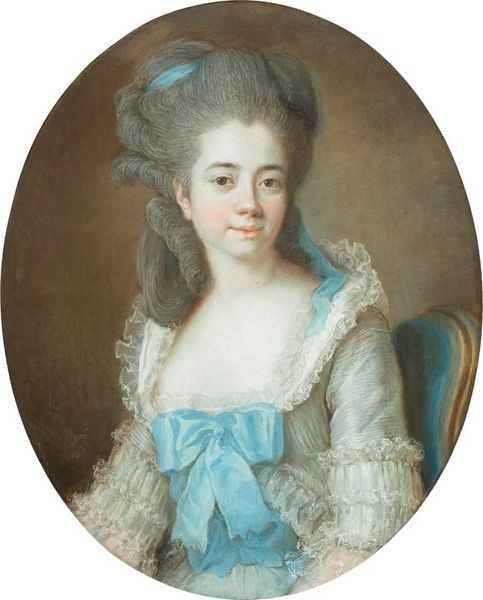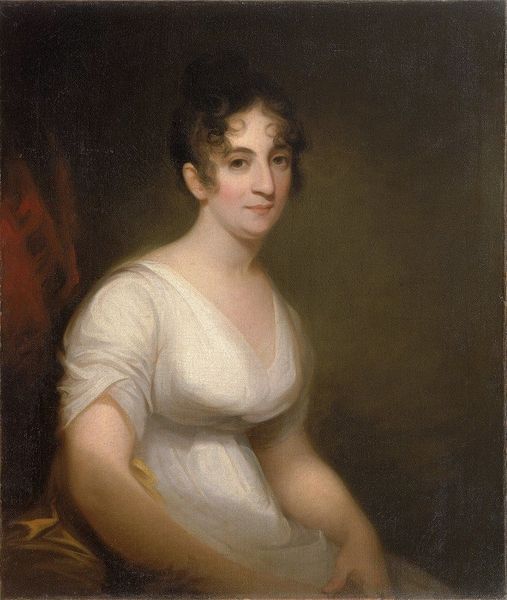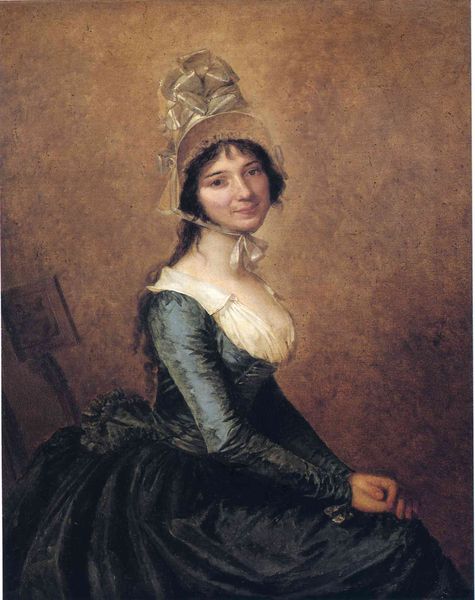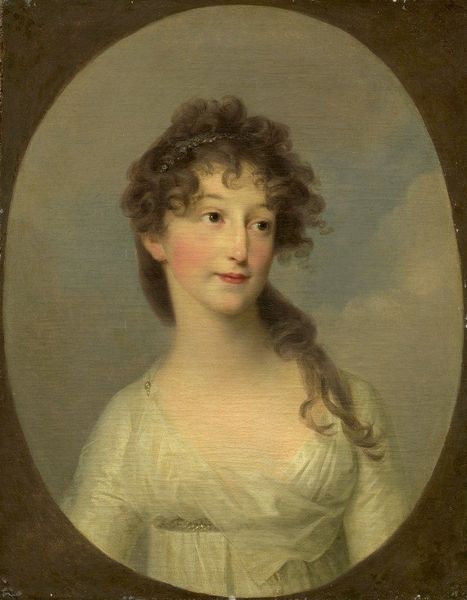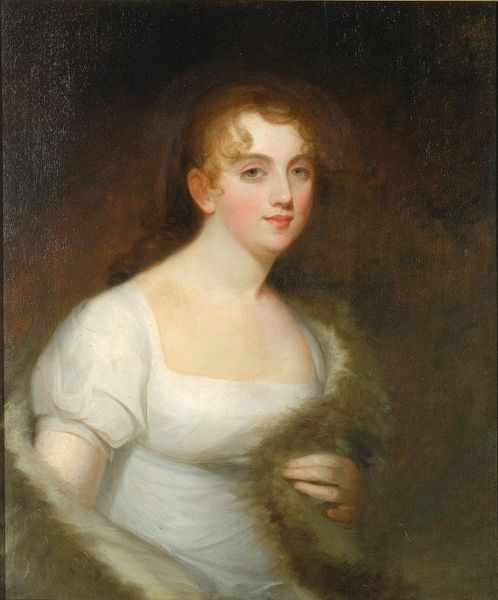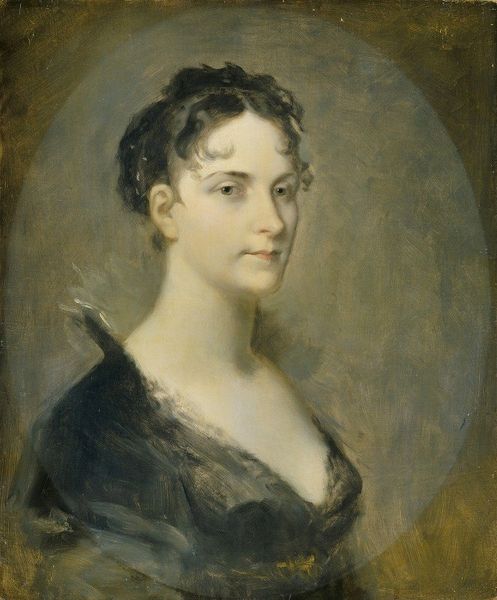
painting, oil-paint
#
portrait
#
figurative
#
baroque
#
painting
#
oil-paint
#
figuration
#
rococo
Copyright: Public Domain: Artvee
Narcisa Barañana de Goicoechea was painted by Francisco Goya in Spain, though the year remains unknown. Portraits such as this offer us a glimpse into the social life of 18th-century Spain, especially the lives of women in the upper class. Narcisa, adorned in elegant black attire, a lace mantilla, and a striking blue ribbon, sits demurely, holding a delicate fan. Her clothing speaks to the latest fashions of the Spanish court, reflecting the influence of French styles. The Spanish court at this time was a complex ecosystem of aristocratic power and influence, and art played a crucial role in constructing and maintaining status. Goya himself moved within the highest social circles, serving as court painter to the Spanish Crown. To fully understand the portrait of Narcisa, we can turn to fashion plates, letters, and diaries from the period to uncover the meanings embedded in her dress, pose, and expression. These kinds of research resources help us to understand the social and institutional context of art, and to reveal the networks of power and influence that shaped its creation.
Comments
No comments
Be the first to comment and join the conversation on the ultimate creative platform.
